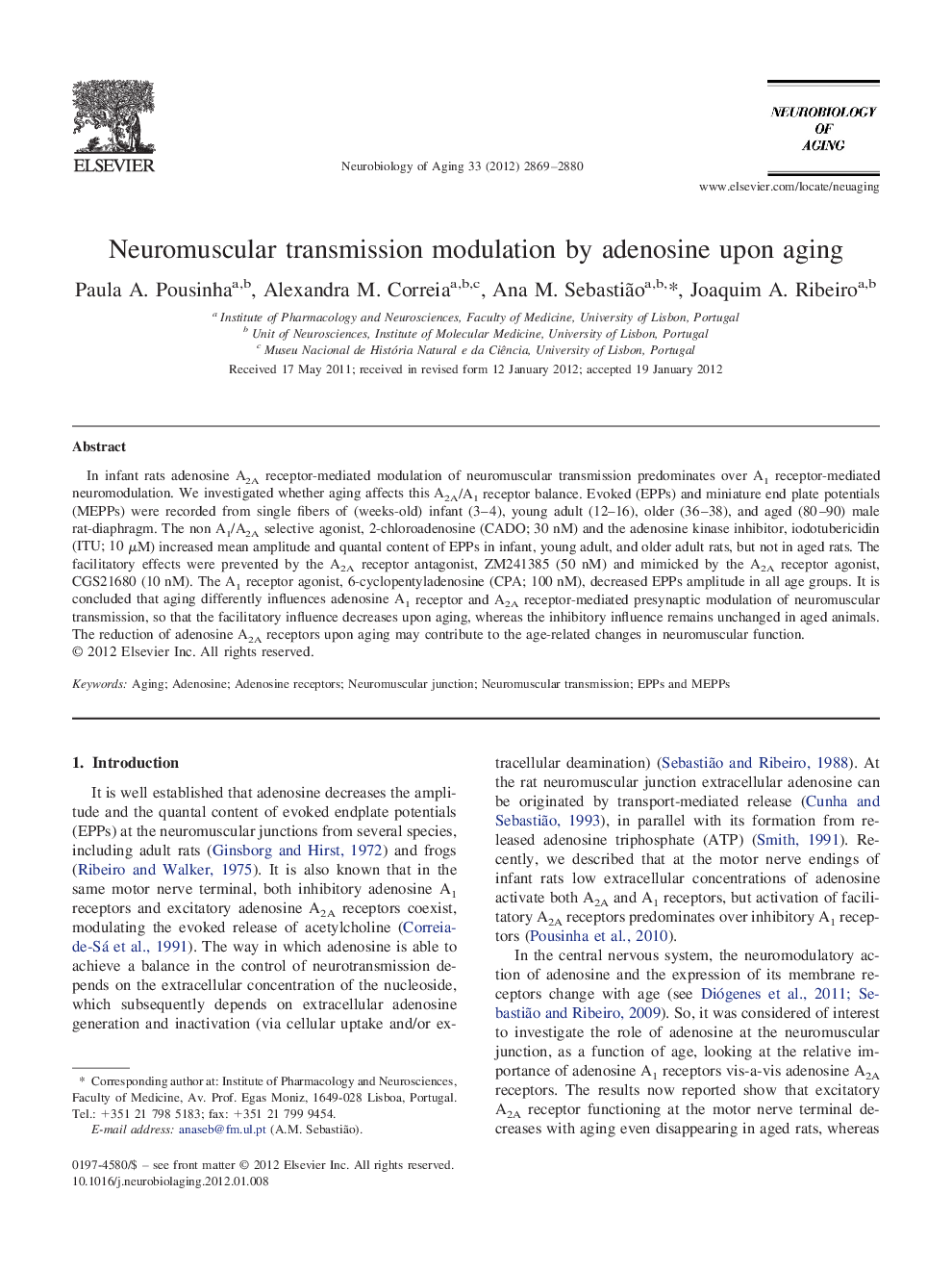| Article ID | Journal | Published Year | Pages | File Type |
|---|---|---|---|---|
| 6808027 | Neurobiology of Aging | 2012 | 12 Pages |
Abstract
In infant rats adenosine A2A receptor-mediated modulation of neuromuscular transmission predominates over A1 receptor-mediated neuromodulation. We investigated whether aging affects this A2A/A1 receptor balance. Evoked (EPPs) and miniature end plate potentials (MEPPs) were recorded from single fibers of (weeks-old) infant (3-4), young adult (12-16), older (36-38), and aged (80-90) male rat-diaphragm. The non A1/A2A selective agonist, 2-chloroadenosine (CADO; 30 nM) and the adenosine kinase inhibitor, iodotubericidin (ITU; 10 μM) increased mean amplitude and quantal content of EPPs in infant, young adult, and older adult rats, but not in aged rats. The facilitatory effects were prevented by the A2A receptor antagonist, ZM241385 (50 nM) and mimicked by the A2A receptor agonist, CGS21680 (10 nM). The A1 receptor agonist, 6-cyclopentyladenosine (CPA; 100 nM), decreased EPPs amplitude in all age groups. It is concluded that aging differently influences adenosine A1 receptor and A2A receptor-mediated presynaptic modulation of neuromuscular transmission, so that the facilitatory influence decreases upon aging, whereas the inhibitory influence remains unchanged in aged animals. The reduction of adenosine A2A receptors upon aging may contribute to the age-related changes in neuromuscular function.
Related Topics
Life Sciences
Biochemistry, Genetics and Molecular Biology
Ageing
Authors
Paula A. Pousinha, Alexandra M. Correia, Ana M. Sebastião, Joaquim A. Ribeiro,
